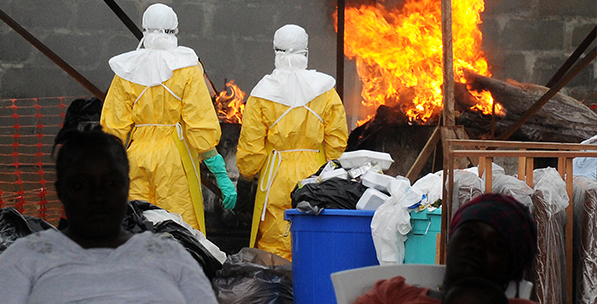A virus that in recent months has become an epidemic, particularly in West Africa, reminded the world once more of the disaster scene that it has only seen in stories. In addition to the panic created by news reports on the crisis, the Ebola epidemic revealed even more clearly what such infectious diseases mean for international security. Countries and militaries that focused on security centered on the arms and defense industry saw once again in a brief period of time how unprepared they were against such a threat. Similar to previous avian flu and swine flu epidemics, the atmosphere was dominated more by gossip and commotion rather than information and panic and anxiety instead of caution. The atmosphere during this period and the debates and arguments over the virus contained elements no different to those one would see in Hollywood movies. The first incident of this virus in the U.S., and then news that more than one nurse in the patient’s quarantine cell had been infected, caused great waves of panic in large American cities with help from social media. While the Ebola outbreak and the treatment process of patients led to the feeling of common fate among people around the world regardless of their religion, race or ethnicity, it was also quite enlightening in terms of revealing large contrasts, discrepancies and inequality between the world’s societies.
We are quite familiar with epidemic diseases and the chaos and struggle that follow from movies, novels and history books. With diseases such as the plague, which spread in the Middle Ages, and the 18th and 19th centuries being a major period of research for historians, the epidemics in more modern periods created an important area of interest for both fiction writers and scriptwriters. Novelists and writers who base their stories around apocalyptic and nightmarish themes, have penned hundreds of works on how epidemics can harm human life, our civilization, politics and social order. The stories concentrate on the spread of a disease, the wave of fear created by the outbreak, the escape from an initially unknown and invisible enemy and heroes who try to crack the code behind the disease and fight it. Very much like Albert Camus’s “The Plague,” while fighting against the disease and social anarchy, political uncertainty and security vulnerabilities caused by the panic, these heroes find themselves amid new questions regarding life.
As epidemics and infectious diseases of more recent times become a part of horror and thriller movies, visual effects bring them slightly closer to an epidemic environment. In addition to this, the information provided by modern journalism and our access to news on epidemics in different regions of the world through television has made the boundaries between reality and fiction a little more transparent. When themes of a nuclear apocalypse, the most used apocalyptic tool in Cold War movies, lost their fear factor after the end of the Cold War, directors and fiction writers were led to seek more “alternative disasters” to scare their audiences. In some of these disasters, climate change takes the world to an ice age like in “The Day After Tomorrow,” and in some the world is occupied by aliens like in “Independence Day.” At a time when such alternative disaster themes were popular, movies based on infectious diseases and epidemics appeared as a new genre.
With the combination of increased globalization, modern journalism and visual effects, it did not take long for epidemics and infectious diseases to become a major part of horror movies and thrillers. The relatively low-budget movie “Outbreak,” made in the mid-1990s, owes much of its success in the box office to the Zaire-based Ebola outbreak during the time it hit theaters. Epidemic movies, which were later overshadowed by those using global warming, emerged in the 2000s. The particularly effective SARS crisis caused great harm to social psychology during this period. For the young generation of the developed world who until then had only heard of infectious disease

